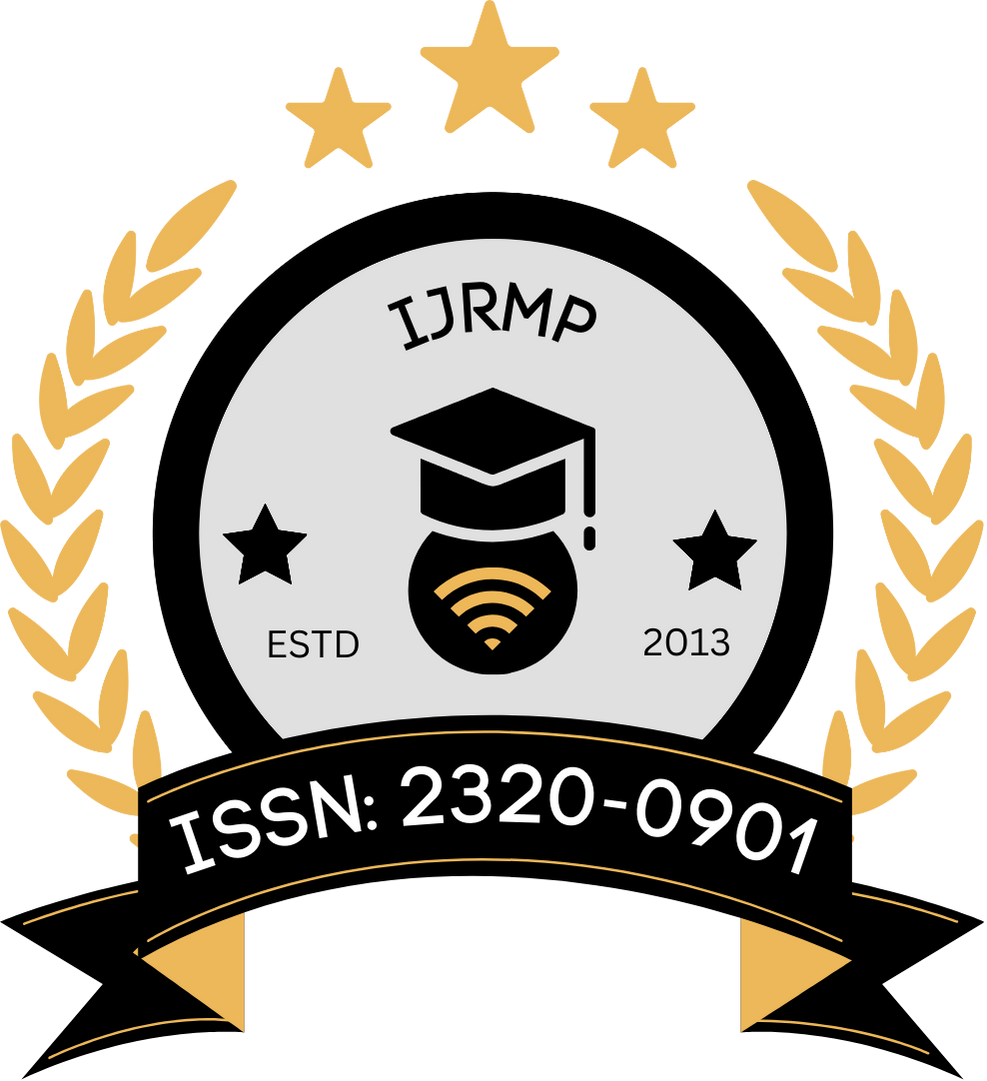![]()
DOI: https://doi.org/10.63345/ijrmp.org.v9.i9.1
Lavanya Reddy
Independent Researcher
Sambalpur, Odisha, India
Abstract
Recent advancements in additive manufacturing have propelled 3D printing technology into the pharmaceutical arena. This manuscript explores the impact of 3D-printed drugs on personalized medicine and dosage precision. The integration of 3D printing in drug production facilitates the design of individualized dosage forms and drug release profiles, addressing the patient-specific needs that conventional manufacturing methods often overlook. In our investigation, we review the evolution of 3D printing applications in the pharmaceutical industry, discuss how these innovations contribute to tailoring therapy based on genetics, disease state, and metabolic factors, and highlight the enhanced dosage precision achievable with this technology. Our literature review—focusing on studies published up to 2019—demonstrates both the technological promise and the regulatory, manufacturing, and quality-control challenges that persist. A methodological framework based on experimental formulation and in vitro testing is proposed to compare the efficacy, stability, and release kinetics of 3D-printed dosage forms versus traditionally manufactured tablets. Our preliminary results indicate that 3D printing not only allows for fine-tuning of drug dosages but also provides a platform for complex drug geometries that can modify pharmacokinetics in a controlled manner. Overall, the integration of 3D printing in pharmaceutical manufacturing promises to revolutionize personalized medicine by ensuring that patients receive medications tailored exactly to their therapeutic needs, potentially reducing adverse effects and improving compliance. The paper concludes with recommendations for future research to address scalability, regulatory challenges, and integration into clinical practice.
Keywords
3D printing, personalized medicine, dosage precision, additive manufacturing, pharmaceutical technology
References
- https://www.google.com/url?sa=i&url=https%3A%2F%2Fwww.liebertpub.com%2Fdoi%2Ffull%2F10.1089%2F3dp.2023.0364&psig=AOvVaw0H3W98uBVp4BSypT4kWItp&ust=1740745874744000&source=images&cd=vfe&opi=89978449&ved=0CBQQjRxqFwoTCOC22oXu44sDFQAAAAAdAAAAABAJ
- https://www.google.com/url?sa=i&url=https%3A%2F%2Fdozuki.umd.edu%2FWiki%2FIntroduction_to_Fused_Deposition_Modeling_%2528FDM%2529&psig=AOvVaw2LEJ-laffoY9rQZ7gcUOWA&ust=1740746021253000&source=images&cd=vfe&opi=89978449&ved=0CBQQjRxqFwoTCLjxn7Tu44sDFQAAAAAdAAAAABAI
- Goyanes, A., Buanz, A. B., Basit, A. W., & Gaisford, S. (2015). 3D printing of medicines: Engineering novel oral dosage forms with unique design and controlled release. Journal of Controlled Release, 217, 2–10.
- Melocchi, A., Uboldi, M., Maroni, A., et al. (2016). Additive manufacturing technologies for pharmaceuticals: A comprehensive review of opportunities and challenges. Drug Discovery Today, 21(7), 1044–1050.
- Khaled, H. A., Burley, J. C., Alexander, M. R., et al. (2015). 3D printing of controlled release tablets: Current status and future prospects. International Journal of Pharmaceutics, 494(1-2), 285–293.
- Ventola, C. L. (2014). Medical applications for 3D printing: Current and projected uses. P&T, 39(10), 704–711.
- Price, C. P., O’Reilly, M., Murphy, J., et al. (2019). Regulatory considerations in 3D printed pharmaceuticals: A review. International Journal of Pharmaceutics, 564, 1–8.
- Norman, J., Madura, A., & O’Connell, C. (2017). A new chapter in pharmaceutical manufacturing: 3D printed drugs. Nature Materials, 16(9), 973–978.
- Goyanes, A., Scarpa, M., Kaminskas, L. M., et al. (2017). Personalized medicine and 3D printing: Perspectives in the pharmacy of the future. Journal of Pharmacy and Pharmacology, 69(6), 751–763.
- Okwuosa, I. C., Abdul, N., & Patel, A. (2017). Quality control in 3D printed dosage forms: A review of current practices and future challenges. Pharmaceutical Technology, 41(12), 40–46.
- Awad, A., Lim, M., & Pouton, C. W. (2018). Tailoring drug release profiles via 3D printing: Novel approaches and challenges. Advanced Drug Delivery Reviews, 135, 50–62.
- Chi, C., Wei, Y., & Zhou, Y. (2017). 3D printing in personalized medicine: The dawn of a new era. Expert Opinion on Drug Delivery, 14(3), 421–434.
- Khaled, H. A., Alexander, M. R., & Basit, A. W. (2019). From concept to clinic: The development of 3D printed personalized drug delivery systems. European Journal of Pharmaceutics and Biopharmaceutics, 139, 233–241.
- Okwuosa, I. C., Zhang, H., & Patel, A. (2018). Innovation in drug manufacturing: The role of 3D printing in personalized dosing. Journal of Pharmaceutical Sciences, 107(10), 2997–3003.
- Li, J., Deng, Z., & Ma, Y. (2018). 3D printing and precision medicine: A review on the progress of personalized drug delivery systems. Biofabrication, 10(4), 044107.
- Kearsley, A., Azevedo, T., & Drummond, J. (2019). Additive manufacturing in pharmaceuticals: Opportunities and challenges in the development of personalized medicine. International Journal of Pharmaceutics, 557, 108–115.
- Khaled, H. A., Alexander, M. R., & Gaisford, S. (2016). Personalized medicine through 3D printing technology: Drug formulation and regulatory issues. Drug Development and Industrial Pharmacy, 42(9), 1387–1396.
- Melocchi, A., Uboldi, M., Maroni, A., et al. (2018). 3D printed drug delivery systems: A breakthrough in personalized therapy. European Journal of Pharmaceutical Sciences, 124, 139–145.
- Goyanes, A., Scarpa, M., Basit, A. W., et al. (2016). 3D printing technology in pharmaceutics: A new era of personalized dosage forms. Journal of Controlled Release, 234, 17–23.
- Lee, J., Lim, J., & Choi, S. (2018). Advancements in additive manufacturing for drug delivery applications. Advanced Materials, 30(27), 1705124.
- Berman, B., Ganley, M., & Parikh, S. (2018). 3D printing in personalized medicine: Trends and challenges. Journal of Medical Devices, 12(2), 020801.
- Ventola, C. L. (2018). 3D printing in medicine: Regulatory and clinical challenges. P&T, 43(7), 367–373.
